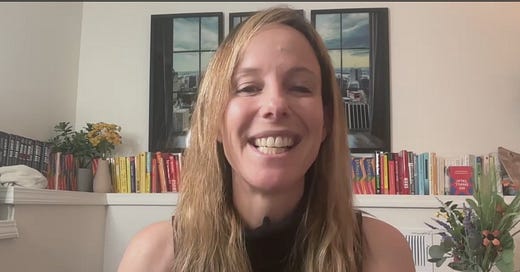TLDR: WATCH THE VIDEO (click above)
What can product and marketing teams learn from sunscreen or light switch design?
Often, the reasons we think we do things aren't the real reasons. Do you drive with your seatbelt on for safety? 🚗 Brush your teeth to prevent tooth decay? 🪥 Walk to boost your heart health? 🏃♂️
We may think so—but often we're doing the "right" thing for the "wrong" reasons. The wrong reason is an immediate benefit that gets us to act now, while having a long-term upside. Take toothbrushing. You do it because it freshens your breath, not to avoid needing dentures. But it helps you with both.
Today, we're getting physical. We're looking at non-digital behavioral interventions that drove change and the unifying theory behind them. In this teardown, I’ll touch on what drove people to wear seat belts, use sunscreen, go for a walk, wash their hands. Get strapped in—because these are a gold mine of insights for product teams. 💡
Buckle up, it's the law (and also, BEEEEP)
What got people to wear seat belts? Laws are a big part of the story. Primary seatbelt laws, which allow police to pull you over just for not wearing a seat belt, increased usage by 11%. Fines over $30 helped too, but not as much as you might think.
The real hero? The beep. That annoying sound when you don’t buckle up drove an 80% increase in adherence. Sure, you want to save your life. But you really want to avoid your beep (and incidentally, your co-passenger wants you to avoid it, too). 🔊
In the video I mention an 80% reduction. This 80% was related to an experiment done to reduce honking in India - the experiment cleverly put the beep INSIDE the car whenever you honked externally. The general finding about continuous seat belt beeping is closer to 20% - 30% reduction.
Makeup with hidden benefits
Every morning women wake up and put on sunscreen. Sure, we don’t usually call it sunscreen. We call it makeup. And we don’t leave the house without our sunscreen, errr make-up.
Makeup is the vessel for sunscreen. Just like bread is the vessel for hummus and mint toothpaste is the vessel for dental hygiene.
The High Line to heart health
How do you get people to walk more? You could tell them about the health benefits, but that rarely works. Instead, NYC's High Line offers a scenic walk that motivates people to exercise to enjoy the view. 👟 The right thing (walking) for the wrong reason (the scenery). And it's free, too.
Hand-washing, Japanese style
How would you increase handwashing? Start a global pandemic (just kidding).
In Japan, many toilets have a clever design to encourage hand-washing: the sink is attached to the flushing mechanism. You activate the flush by turning on the sink water! This simple design change improves public hygiene by putting the desired behavior literally at your fingertips.
And it's eco-friendly, too. The clean water you wash your hands with is recycled into the toilet. Right things, wrong reasons. 🫧 🚽
Lights out or locked out
In Europe, hotels don’t lecture you about saving energy. Instead, they tie the lights to the key card. You need to remove your key to leave the room, which turns off the lights. You don’t need to care about the environment; you just don’t want to get locked out. 🌍🔑
3 takeaways:
🎯 Immediate benefits can drive long-term behaviors.
✅ To achieve the right behavior, design for the wrong reason.
🧭 Subtle environmental cues can guide decision-making.
What are your thoughts on using immediate rewards to drive behavior change? Let me know in the comments. 💬
Until next time, keep doing the right thing (for whatever reason gets you there). 👋.
Have a friend who would enjoy these teardowns? Click the button below to refer them (& earn some great rewards)👇
Questions about your product? Email kristen@irrationallabs.com.
Want to increase conversion, retention, engagement? Reach out to Irrational Labs.
We design products that change behavior, using behavioral science. Check out our case studies to see it in action.



Share this post